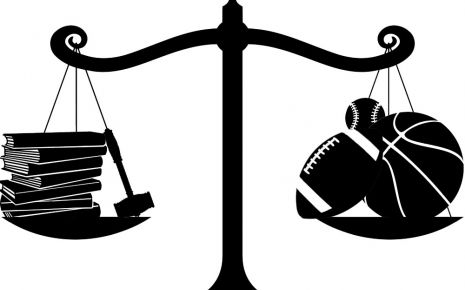Meaning And Registration Of Design Under Design Act, 2000
Customer's attraction towards a product is guided by multiple factors. One of
the factors which influence a customer's decision is the appearance of the
article. The appearance of an article plays a pivotal role in affecting the sale
of the product. It is for the same reason that the sellers invest a good deal of
time and money to create a design for their product which is distinct from the
other designs in order to increase the sale of the same and earn profit.
Here, it is important to note that a design is something that is either intrinsically or extrinsically attached to an article and it is not an article itself. It is impossible for a design to have a separate existence. In other words, design cannot be separated from the article.
Earlier the Design Law in India was governed by Design Act 1911. There has been considerable growth in the area of science and technology since the enactment of the Design Act, 1911. It was also felt that a better legal system is required to ensure effective protection of a registered Design. The enactment of new act was also necessary in order to bring the India Design Law at par with the International Law. The Design Act 1911 has been repealed and replaced by Design Act 2000. Presently the Law pertaining to Design in India is governed by Design Act 2000.
The word design can have different meanings in different contexts. Even in the singular and specific context of intellectual property law, the word design has multiple sub-contextual meanings. If you use the word design in the sub-context of a trademark, it could mean the design of the logo of a brand. If you use it in the sub-context of a copyright it can refer to visual art and when it comes to patents, the word design can refer to a drawing of a working prototype of an invention.
Under the 2000 Act it is possible to reinstate the registration of a design. It simply means that the registration of a design can be restored.
The provisions relating to punishment for any infringement has been made more stringent in the new Act in terms of its quantum.
The new Act contains provisions regarding the substitution of an application before registering a design.
The Designs Act, 2000 contains certain provisions for the regulation of anti-competitive practices within contractual licences.
The new enactment includes the provisions in relation to the delegation of powers of the controller to other controllers.
The intellectual property law protects intellectual property rights. But the law cannot protect these rights all by itself. It can only declare the illegality of infringing such rights and empowers the authorities to take action against such infringement. It is the authorities that have to uphold the law and execute its provisions. The presiding officer when it comes to the registration of a design is called a Controller.
Under this section of the act, the provisions are laid down as to who the controller and the other officers are in the hierarchy of the registration authorities for designs. It mentions that
'The Controller General of Patents, Designs, and Trade Marks appointed under sub-section (1) of section 4 of the Trade and Merchandise Marks Act, 1958 shall be the Controller of Designs for the purposes of this Act.'
Basically, the power of the controller for patents, designs, and trademarks is to be rested in one office. The section also states that 'the Central Government may appoint as many examiners and other officers and with such designations, as it thinks fit in sub-section (2) of this section. It says that the controller is the ultimate authority and the allocation or withdrawal of any work assigned to the officers is only at the discretion of the controller.
It is necessary that the design must be new with respect to the class of the article to which it has been applied. A combination of already existing Design may also be registrable, provided the combination gives rise to new aesthetic appeal to eye. A design is not registrable in case it comprises or contains scandalous or obscene matter.
Case Laws
Conclusion
A design which is unique and new is an eye candy for the customers and it plays an important role in influencing the customer's minds a design is protected if it is the original work and has novelty. Moreover, the protection afforded by the act encourages creativity and also helps to protect the interest of the consumers as well as manufacturers as the design appeals to the eyes and increases the marketability of any product it is necessary to protect it from copycats and to do the Design Act plays a very crucial role.
There are various advantages and disadvantages attached to it too so the inventor must keep the points in mind and follow the procedures for the protection of his article. As the government is formulating more and more policies for the development of the industries in our country, it is essential that the designs created by the innovators are adequately protected. For this purpose, the government should make the provisions more stringent to protect the copyright in design.
Here, it is important to note that a design is something that is either intrinsically or extrinsically attached to an article and it is not an article itself. It is impossible for a design to have a separate existence. In other words, design cannot be separated from the article.
Locarno classification
The Locarno classification is administered by the World Intellectual Property Organization (WIPO) through multilateral treaty. This classification consists of a list of 32 classes and 219 subclasses with the explanatory notes into which any design can be incorporated. This list includes around 6797 indications of different types of products. Before India has adopted the Locarno classification it classified products for industrial designs on the basis of the material which has been used to make the product. Only after the enactment of the new law the design was classified on the basis of the subject matter the design.Earlier the Design Law in India was governed by Design Act 1911. There has been considerable growth in the area of science and technology since the enactment of the Design Act, 1911. It was also felt that a better legal system is required to ensure effective protection of a registered Design. The enactment of new act was also necessary in order to bring the India Design Law at par with the International Law. The Design Act 1911 has been repealed and replaced by Design Act 2000. Presently the Law pertaining to Design in India is governed by Design Act 2000.
The word design can have different meanings in different contexts. Even in the singular and specific context of intellectual property law, the word design has multiple sub-contextual meanings. If you use the word design in the sub-context of a trademark, it could mean the design of the logo of a brand. If you use it in the sub-context of a copyright it can refer to visual art and when it comes to patents, the word design can refer to a drawing of a working prototype of an invention.
Definition of a Design
A design is defined under Section 2(d) of the Designs Act 2001, as only the features of a shape, pattern, configuration, composition or ornament of lines or colours that are applied to any article that is two dimensional, three dimensional, or both by an industrial process or any means whether mechanical, manual or chemical, separated or combined, which in the finished article are judged solely by the eye; but is not taken into account upon the principle of construction or anythingAlthough it does not include:
- Any mode or principle of construction or anything which is in substance a mere mechanical device, and does not include any trademark as defined in clause (v) of sub-section (1) of section 2 of the Trade and Merchandise Marks Act, 1958;
- It does not include 'property mark' as defined in section 479 of the Indian Penal Code, 1860.
- It does not include any artistic work as defined in clause (c) of section 2 of the Copyright Act, 1957.
Striking features of the Designs Act, 2000
The Designs Act, 2000 incorporates the concept of 'absolute novelty'. In simple language, absolute novelty means that an invention is new if it has not been used or published anywhere in the world. The concept of absolute novelty aids in judging a novelty on the basis of prior publications of any article.Under the 2000 Act it is possible to reinstate the registration of a design. It simply means that the registration of a design can be restored.
The provisions relating to punishment for any infringement has been made more stringent in the new Act in terms of its quantum.
The new Act contains provisions regarding the substitution of an application before registering a design.
The Designs Act, 2000 contains certain provisions for the regulation of anti-competitive practices within contractual licences.
The new enactment includes the provisions in relation to the delegation of powers of the controller to other controllers.
Registration of a Design under the Designs Act.
The registration aspect of the design is detailed in Chapter II of the Designs Act, titled 'Registration of Designs'. Sections 3-7 of the Act deal with the registration process. Let us take a look at these various sections.The intellectual property law protects intellectual property rights. But the law cannot protect these rights all by itself. It can only declare the illegality of infringing such rights and empowers the authorities to take action against such infringement. It is the authorities that have to uphold the law and execute its provisions. The presiding officer when it comes to the registration of a design is called a Controller.
Under this section of the act, the provisions are laid down as to who the controller and the other officers are in the hierarchy of the registration authorities for designs. It mentions that
'The Controller General of Patents, Designs, and Trade Marks appointed under sub-section (1) of section 4 of the Trade and Merchandise Marks Act, 1958 shall be the Controller of Designs for the purposes of this Act.'
Basically, the power of the controller for patents, designs, and trademarks is to be rested in one office. The section also states that 'the Central Government may appoint as many examiners and other officers and with such designations, as it thinks fit in sub-section (2) of this section. It says that the controller is the ultimate authority and the allocation or withdrawal of any work assigned to the officers is only at the discretion of the controller.
Prohibition of registration of certain designs
- Design which is not new or original
- Has been disclosed to the public anywhere in India or in any other country by publication in tangible form or by use or in any other way prior to the filing date, or where applicable, the priority date of the application for registration
- Not significantly distinguishable from known designs or combination of known designs
- Comprises or contains scandalous or obscene matter, shall not be registered.' It is apparent that a Design, in order to qualify for registration it must be new, original and not previously published in India. Publication of a Design means publication in Public.
It is necessary that the design must be new with respect to the class of the article to which it has been applied. A combination of already existing Design may also be registrable, provided the combination gives rise to new aesthetic appeal to eye. A design is not registrable in case it comprises or contains scandalous or obscene matter.
Procedure For Registration Of Design
- Filing of an application
An application is to be made in the patent office in the prescribed form along with the prescribed fees.
The application shall specify the following:
- The class in which the design is to be registered.
- The articles to which the design is to be applied.
- Moreover, a separate application shall be filed for each class of articles.
- Examination of the application
After receiving the application for the registration of the design, the controller will send the application to be examined in order to check whether the design is eligible to be registered or not. After receiving a positive signal from the examiner, the controller will accept the application and proceed further with the procedure.
- Communicating the objections, if any
After the examination of the application, if the examiner finds any defects in the application, the same has to be notified to the applicant. After the defects are communicated to the applicant, the applicant is required to remove all the objections after which the applicant shall resubmit the application to the appropriate patent office for the acceptance of the application within six months from the official date of the application. If all the objections are not removed within 3 months after communication of the objections to the applicant, the application will be withdrawn.
- Publication of particulars of registered designs
After the registration of the design, the Controller shall publish the prescribed particulars of the design in such manner as may be prescribed (in the Designs Rules, 2001) after which the design shall be open for public inspection.
Validity of Design Registration
The duration of the registration of a design is initially ten years from the date of registration, but in cases where claim to priority has been allowed the duration is ten years from the priority date. This initial period of registration may be extended by further period of 5 years on an application made in Form-3 accompanied by prescribed fees to the Controller before the expiry of the said initial period of ten years. The proprietor of a design may make application for such extension even as soon as the design is registered.Case Laws
Reckitt Benckiser (India) Ltd. v. Wyeth Ltd.
Facts:
In this case, the issue was regarding the registration of S-shaped spatulas. The defendant in this case i.e. Wyeth Ltd. claimed that the appellant's design was not original as it has already been registered in a foreign country before its registration in India. And also there was the suppression of facts regarding the prior registration in a foreign country.
Judgment:
The Court held that if it can be shown that the design was disclosed anywhere in India or a foreign country by means mentioned under Section 4(b) then the registration is India would be considered to be cancelled and it can be sought as a defence against alleged infringement under Section 22(3).
M/S Kamdhenu Limited v. M/S Aashiana Rolling Mills Ltd
In a case involving a registered design pertaining to double rib pattern of steel rods, the Delhi High Court cancelled the registration summarily stating that there is no need for a full trial.
The Court came to this conclusion primarily based on the fact that the design that formed part of the registration was published as part of British, ISO and other standards before the filing date of the design application. Based on the evidence on record, the Court stated that the application for cancellation of the Registered Design has a high likelihood of success, and that no further evidence needs to be led in this respect. While stating so, the Court pointed out that a strong prima facie case at the interim level does not necessarily give rise to a high likelihood of success.
Conclusion
A design which is unique and new is an eye candy for the customers and it plays an important role in influencing the customer's minds a design is protected if it is the original work and has novelty. Moreover, the protection afforded by the act encourages creativity and also helps to protect the interest of the consumers as well as manufacturers as the design appeals to the eyes and increases the marketability of any product it is necessary to protect it from copycats and to do the Design Act plays a very crucial role.
There are various advantages and disadvantages attached to it too so the inventor must keep the points in mind and follow the procedures for the protection of his article. As the government is formulating more and more policies for the development of the industries in our country, it is essential that the designs created by the innovators are adequately protected. For this purpose, the government should make the provisions more stringent to protect the copyright in design.
Law Article in India
Legal Question & Answers
Lawyers in India - Search By City
LawArticles
How To File For Mutual Divorce In Delhi

How To File For Mutual Divorce In Delhi Mutual Consent Divorce is the Simplest Way to Obtain a D...
Increased Age For Girls Marriage

It is hoped that the Prohibition of Child Marriage (Amendment) Bill, 2021, which intends to inc...
Facade of Social Media

One may very easily get absorbed in the lives of others as one scrolls through a Facebook news ...
Section 482 CrPc - Quashing Of FIR: Guid...

The Inherent power under Section 482 in The Code Of Criminal Procedure, 1973 (37th Chapter of t...
The Uniform Civil Code (UCC) in India: A...

The Uniform Civil Code (UCC) is a concept that proposes the unification of personal laws across...
Role Of Artificial Intelligence In Legal...

Artificial intelligence (AI) is revolutionizing various sectors of the economy, and the legal i...








Please Drop Your Comments